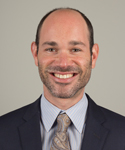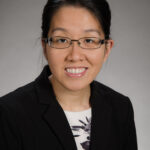“Now, it’s easier to do interviews that sound very professional. And with so many more microphone and boom options, it’s easy to make a podcast sound like it’s done in a studio, even though it is not,” he says.
As a regular listener to The Rheumatology Podcast, Dr. Hausmann was inspired to learn more about the podcasting medium and seized the opportunity to host ACR on Air. “I was a big fan of that podcast. It kept me up to date on new rheumatology articles being published, and the hosts always discussed how the article’s findings would change what we do in our daily practice and how we treat our patients,” he says.
Podcasts make medical education more accessible, says Michael S. Putman, MD, a second-year rheumatology fellow at Northwestern University Feinberg School of Medicine, Chicago, who recently launched his second rheumatology podcast, Rheum4Debate.
“Online resources these days provide such incredible opportunities to produce and distribute content. This has helped to fuel the #FOAMed [free, open-access medical education] movement. But unfortunately, this has been less active in rheumatology. The community has really started to take off, though,” says Dr. Putman, who says he listens to three rheumatology podcasts each week. “It’s fun, because we’re all providing something different.”
ACR on Air: What’s on Tap
In the podcast’s first episode, Dr. Hausmann interviewed Sheila Angeles-Han, MD, the lead co-author of the new juvenile idiopathic arthritis (JIA) clinical practice guidelines published in a series of articles in Arthritis Care & Research in June, including one on JIA-associated uveitis screening and treatment, and other therapeutic approaches for non-systemic polyarthritis, sacroiliitis and enthesitis.1,2
“We went behind the guidelines and asked questions like: ‘What were the challenges in creating these recommendations? How did [the authors], as relatively young rheumatologists, become the main authors of this very important manuscript?’” Dr. Hausmann says.
The premiere episode of ACR on Air also explores the challenges described in the 2015 ACR Workforce Study.3 “We talked about the findings in the Workforce Study, which predicts increased demand for rheumatology care, especially with the aging of the population, while at the same time the supply of rheumatologists is expected to decrease over time. We also interviewed a physician assistant to talk about how these rheumatology professionals can become involved to address the shortage of providers,” Dr. Hausmann says.
In the second episode, Drs. Bhana, Sufka and Hausmann analyzed selected articles published in recent issues of the ACR’s journals and provided commentary on their clinical implications.


